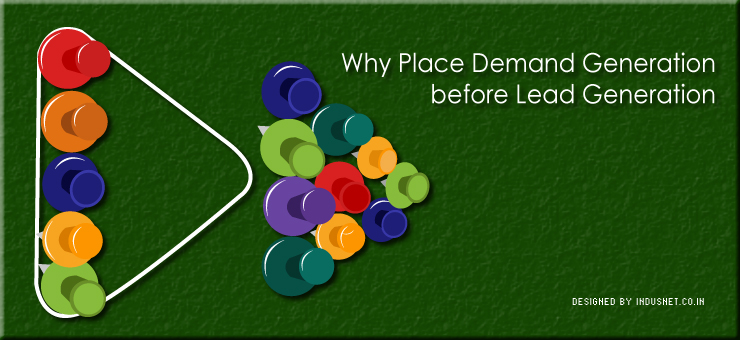
When you collect information about random people and try to filter out possible people who might purchase your services or products, you are trying to generate leads. The idea is to build a marketing base so that you can follow-up over email or telephone. Lead generation helps in email and telemarketing. The outcome of lead generation is sales and new contacts to contact. Demand generation, on the other hand, is more subtle. It is the process in which you deliberately create demand for your products and services subtly or not so subtly. The outcome of demand generation is that people are more likely to purchase your products or services.
Understanding the difference between the two
Marketers often do not understand the difference between the two and confuse it along the way. Moreover, they mix demand generation with lead generation and annoy potential leads and customers both. Demand generation helps you to gain customers and lead generation helps you to gain leads for whom you might create demand later on. Thus, the initial step is to collect all the leads and save them in a database. Once you have your leads, you can create demand using content marketing, advertising and direct persuasion. But wait a minute. Is it always like that? Can’t one create demand when no leads are in sight? Quite possible. In this article, let us take a look at why you need to place demand generation before lead generation, though the opposite is the norm usually.
Create demand generation using great content
Content marketing is not the same as demand generation. However, when you write great content and offer information for free, people will come back to you as there is already a demand created subtly through persuasive content and informative blog posts. Blogs can be persuasive even when they are not written in a persuasive way. In fact, blogs need to be opinionated, honest and informative. They should not be persuasive at all. Yet, people tend to respect the people who write those informative blogs than those who do not. Already, a sort of persuasion and demand generation is taking place.
Leads generated after being exposed to demand generation are more likely to purchase
Once you create tasks and campaigns for demand generation, it is easy to understand who will be your customers and who will just walk away after reading your content. Creating demand in the form of marketing campaigns or content marketing will help you to expose your potential leads to what you offer as an entity. They will ‘know’ you already and thus, it is easy for them to accept to be leads. The leads who were initially exposed to your demand generation strategies are more likely to make purchases as well; and that is a great way to build your database of leads who are more likely to proceed towards making purchases.
Demand generation filters unwanted people
Demand generation campaigns are useful in a twisted sort of way. They make sure that they turn off people who are not interested in your communication. When they are exposed to your demand generation content, they will know whether they are interested or not in what you offer. You will be less likely to send your marketing information and telemarketing calls towards these people who are not interested in being contacted at all. Demand generation sort of primes people into becoming leads and then, becoming customers. Thus, demand generation acts as a filter to avoid people who are not likely to become leads.
Specific marketing campaigns can be designed once demand is generated
When you design demand generation campaigns, you will get to know who your real target audience is. The answers can be pretty startling. A candy that was flavored with an exotic fruit from Thailand became hugely popular among those who had returned from Thailand. These Americans who vacationed in Thailand were more likely to purchase the candy than someone who had not visited Thailand. By communicating about the fruit that is grown in Thailand, one could identify a potential lead pool, who will probably buy the candy for the sake of nostalgia.
There can be many more examples of how demand generation can be used to design specific marketing campaigns. Demand generation is quickly becoming the preferred form of short-listing potential leads before even one gets to lead generation; and this is a positive development.